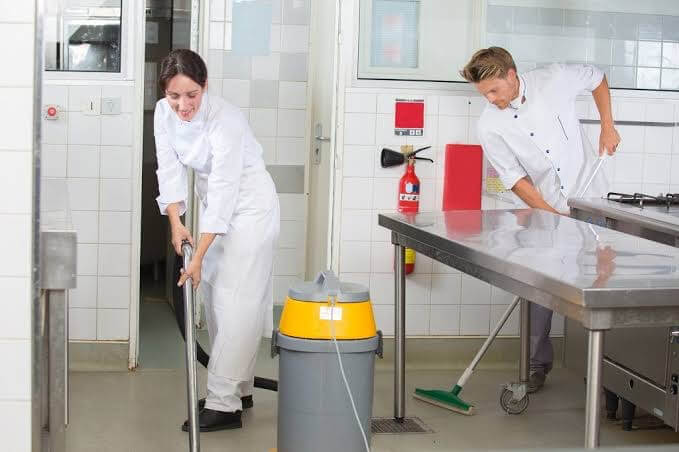SITHKOP009 Clean kitchen premises and equipment
In this unit you will learn how to;
- Clean and sanitise kitchen equipment
- Clean service-ware and utensils
- Clean and sanitise kitchen premises
- Work safely and reduce negative environmental impacts
Introduction
Cleaning is a vital part of the production cycle in the hospitality industry. This unit will demonstrate how to select the appropriate chemicals for various cleaning tasks, use them in accordance to health & safety regulations and also to help you to understand the hazards associated with handling the various chemicals
A chef, restaurateur or caterer has a legal obligation to ensure a clean environment in which meals are prepared so cleaning cannot be overlooked where food is stored, prepared and served to customers.
Three main areas hygiene needs to be considered include:
- Personal Hygiene
- Food Handling Hygiene
- Kitchen Premises Hygiene
When working in a kitchen there is the general rule; ‘clean as you go’ and this applies to kitchen operations in the same way as it applies to all hospitality activities. If your shift starts with a clean, well-stocked environment you should be able to maintain this as you work and keep it that way until you finish. Then, too, working with food means that you must observe hygiene regulations and all times and this means cleaning and sanitising all work surfaces and implements as and when needed.
There is a significant difference between cleaning and sanitising;
- Cleaning removes food and other types of soil from surfaces such as countertops or plates.
- Sanitising is the process by which we can reduce the number of pathogens on a clean surface to safe levels.
Selecting and using chemicals
Cleaning in a commercial kitchen environment involves removing dirt, grime, food scraps and grease from all surfaces, equipment, utensils, crockery. This is one of the most an important tasks in a professional kitchen, and wherever else food is prepared for sale and consumption by the public.
The cleaning process does not only need to address removing dirt, so proper sanitisation procedures should always be followed.
Your organisation should have a HACCP food management plan in place. This plan is designed to monitor and control critical control points where food and beverages are most at risk of bacterial contamination. Ensuring that the premises and the equipment and machinery used in food and beverage production is both clean and sanitised regularly will be a major part of the plan.
In order to keep premises and equipment scrupulously clean, however, you need to use the right materials.
Cleaning agents and chemicals, regardless of whether they are used in the home or in the workplace, can potentially be toxic and harmful to your health if not used correctly. For this reason you should always use chemicals in line with manufacturer instructions and with your organisation’s policies and procedures. Before we look at what these might be let us first look at the many kinds of cleaning agents and chemicals you may come across in your daily work….. continued in learner guide ….
